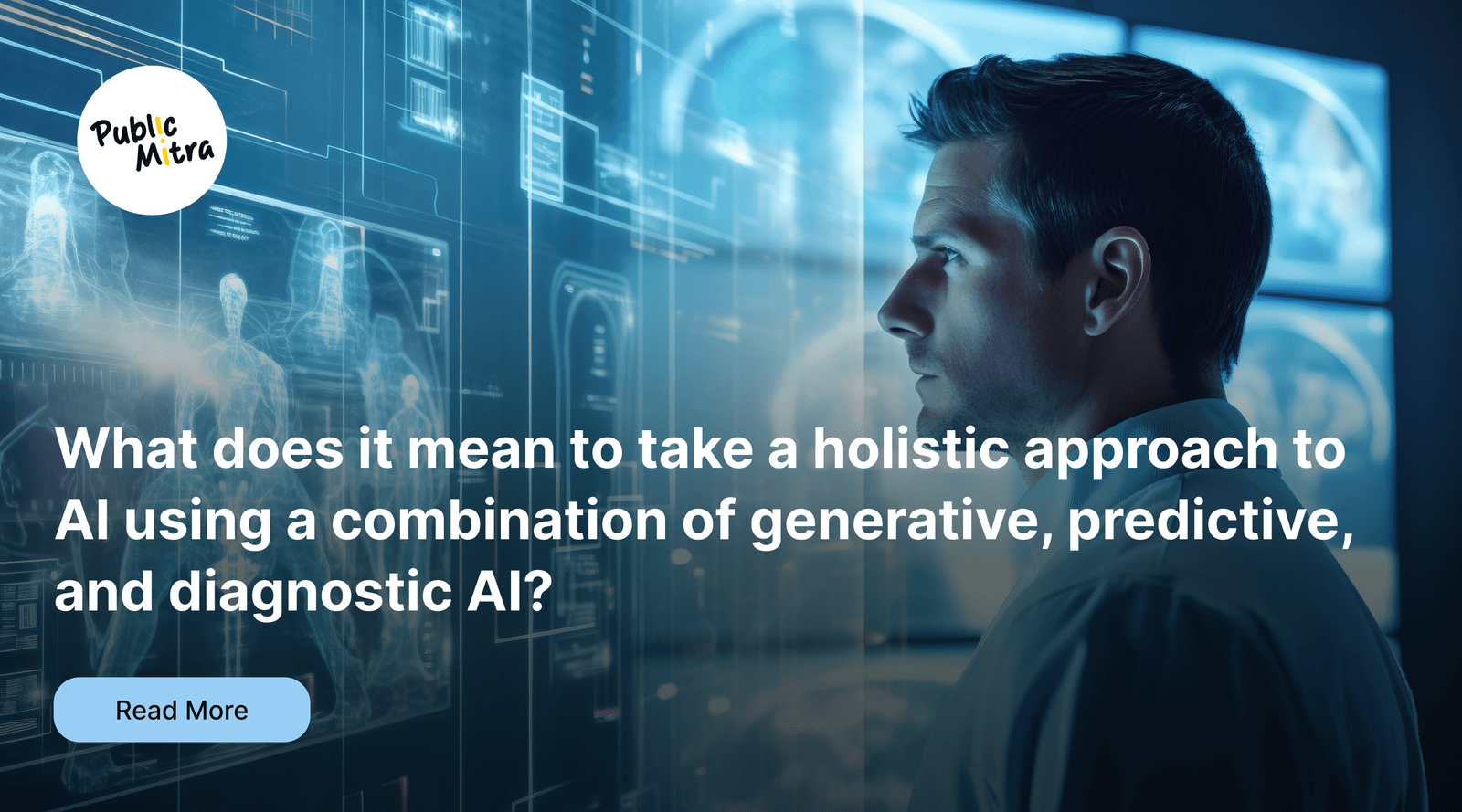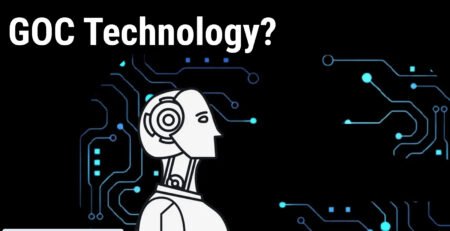What Does It Mean to Take a Holistic Approach to AI Using a Combination of Generative, Predictive, and Diagnostic AI?
Publicmitra2024-06-27T17:37:51+00:00Artificial Intelligence (AI) is revolutionising various sectors by automating tasks, enhancing decision-making, and providing new insights.
However, to harness its full potential, it’s essential to take a holistic approach. This involves integrating generative, predictive, and diagnostic AI.
This blog explores what each type of AI entails, how they complement each other, and the benefits of adopting a holistic approach.
What is Generative AI?
Generative AI is a subset of artificial intelligence that focuses on creating new content. It uses algorithms to generate text, images, music, and other forms of data. One of the most well-known examples is GPT-3 (Generative Pre-trained Transformer 3), which can produce human-like text based on the input it receives.
Generative AI works by learning patterns from a vast amount of data. Once trained, it can produce new content that mimics the style and structure of the input data. This technology is widely used in creative industries, content generation, and even in simulating scenarios for training purposes.
The Role of Predictive AI
Predictive AI, on the other hand, is designed to forecast future events based on historical data. It uses machine learning algorithms to analyse past behaviours and identify patterns that can predict future outcomes. This type of AI is incredibly valuable in fields like finance, healthcare, and marketing.
For example, predictive AI can forecast stock market trends, predict patient outcomes in healthcare, and anticipate customer behaviour in marketing campaigns. By leveraging historical data, predictive AI helps organisations make informed decisions and proactively address potential issues.
Exploring Diagnostic AI
Diagnostic AI focuses on identifying problems or anomalies within a dataset. It is particularly prevalent in the healthcare sector, where it assists in diagnosing diseases by analysing medical images, lab results, and patient records. Diagnostic AI can rapidly and accurately identify issues that might be overlooked by human analysis.
In addition to healthcare, diagnostic AI is used in manufacturing to detect defects in products, in cybersecurity to identify potential threats, and in maintenance to predict equipment failures. By pinpointing problems early, diagnostic AI helps prevent larger issues and reduces downtime.
The Synergy of Combining Generative, Predictive, and Diagnostic AI
Taking a holistic approach to AI means integrating generative, predictive, and diagnostic AI to create a more robust and comprehensive system. Here’s how combining these three types of AI can benefit various sectors:
- Enhanced Creativity and Innovation: Generative AI can be used to brainstorm new ideas, design innovative products, and create engaging content. Predictive AI can then forecast the potential success of these innovations, while diagnostic AI can identify any flaws or risks early in the development process.
- Improved Decision-Making: By using predictive AI, organisations can anticipate future trends and outcomes, allowing for more strategic planning. Diagnostic AI adds another layer by identifying current issues that need to be addressed. Generative AI can simulate different scenarios, helping decision-makers visualise potential impacts and outcomes.
- Optimised Operations: In manufacturing, for instance, generative AI can design efficient production processes. Predictive AI can forecast demand and optimise inventory management, while diagnostic AI ensures that machinery and equipment are functioning correctly, reducing downtime and maintenance costs.
- Personalised Experiences: In the customer service and marketing sectors, generative AI can create personalised content and recommendations. Predictive AI can analyse customer data to forecast needs and preferences, and diagnostic AI can identify any issues in the customer journey, ensuring a smooth and satisfying experience.
The Benefits of a Holistic AI Approach
Adopting a holistic approach to AI offers several benefits:
- Comprehensive Insights: Combining different types of AI provides a more complete understanding of data, leading to better insights and more informed decisions.
- Efficiency and Accuracy: By integrating generative, predictive, and diagnostic AI, organisations can streamline operations, reduce errors, and increase overall efficiency.
- Proactive Problem-Solving: Predictive and diagnostic AI allows organisations to identify and address issues before they escalate, saving time and resources.
- Enhanced Innovation: Generative AI fosters creativity and innovation, enabling organisations to stay competitive in a rapidly changing market.
Conclusion
Taking a holistic approach to AI by integrating generative, predictive, and diagnostic technologies is key to unlocking its full potential. This comprehensive strategy not only enhances creativity and decision-making but also optimises operations and personalises experiences. As AI continues to evolve, embracing this holistic approach will be essential for organisations aiming to stay ahead in their respective fields. By leveraging the strengths of each type of AI, we can create more intelligent, efficient, and innovative solutions to meet the challenges of the future.












